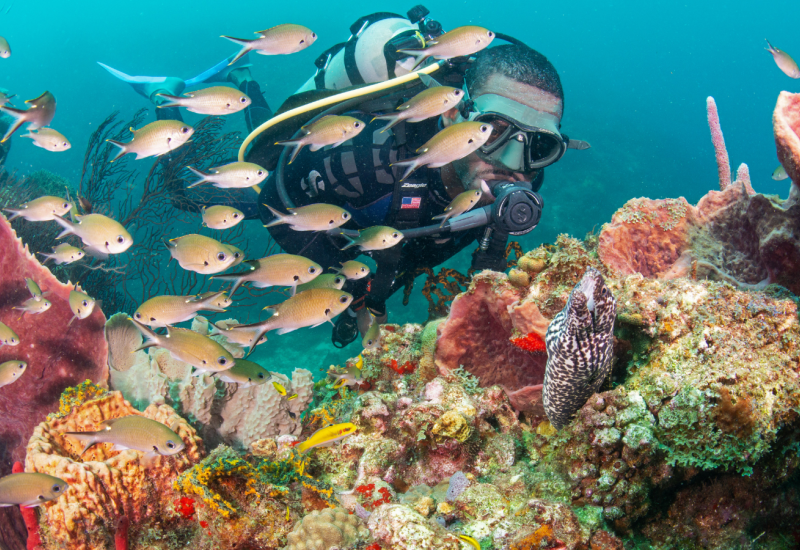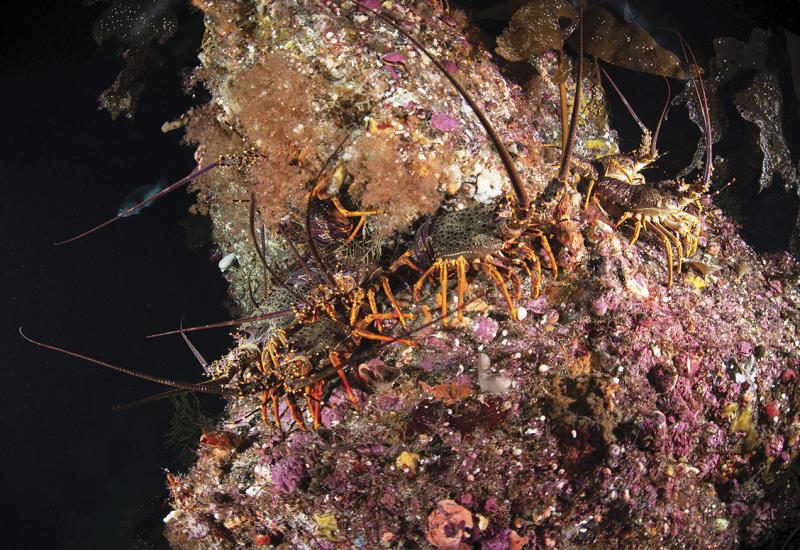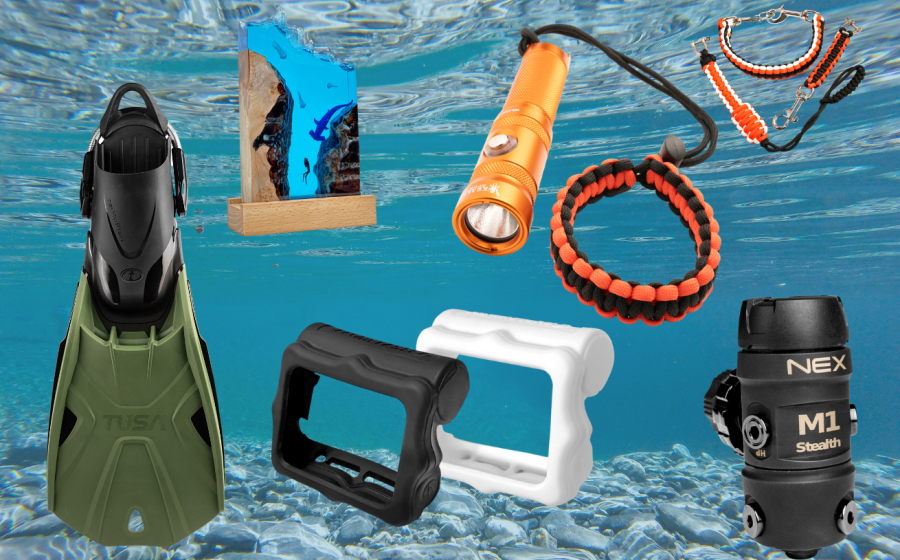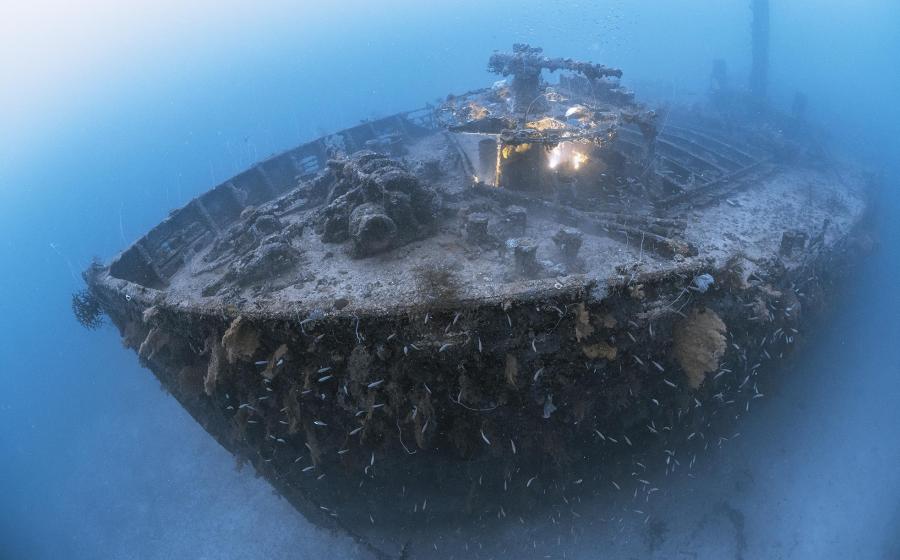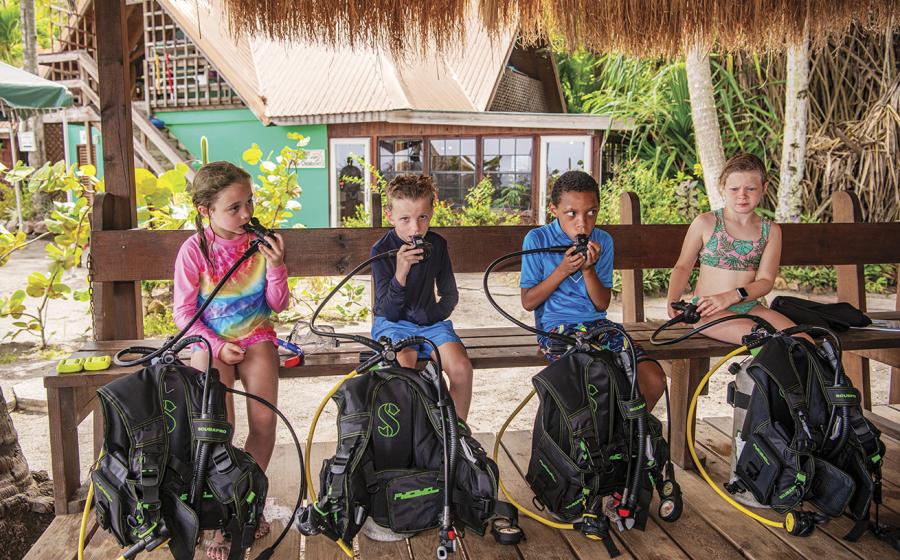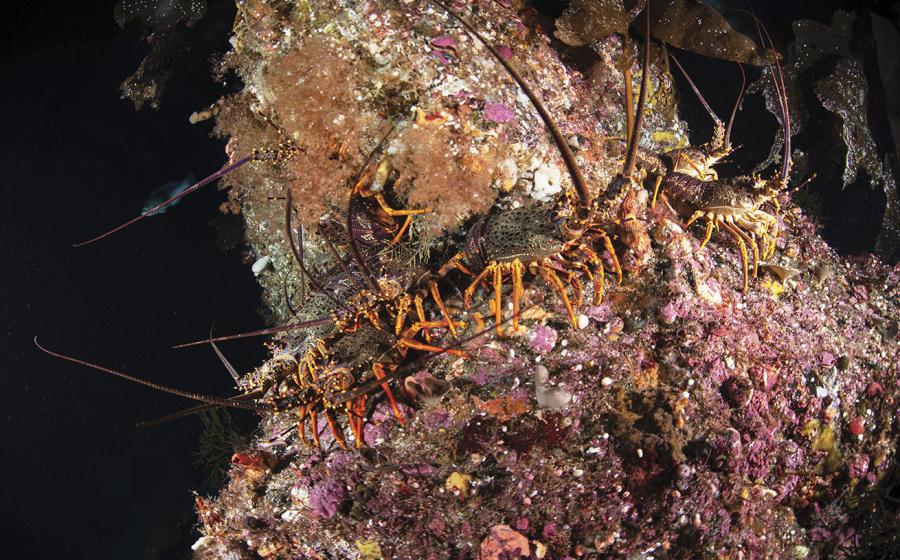Don't Dive the Galapagos Without Reading This First
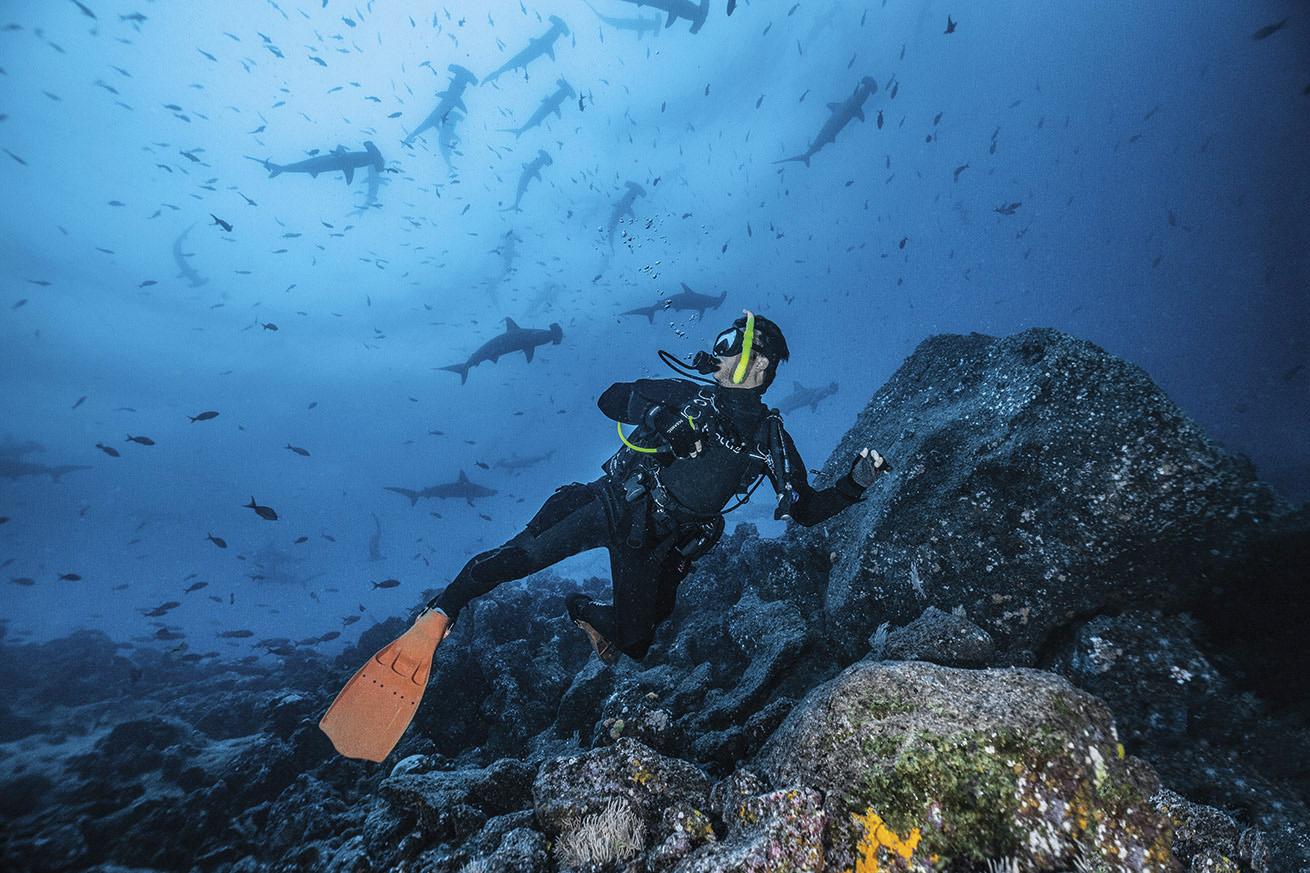
Timo DerschGalapagos is one of the few places on Earth to see schools of scalloped hammerhead sharks.
Shortly after my recent dive trip to Galapagos, a friend reached out. She’d seen my social media posts and was inspired to plan her own visit. She asked for advice.
I hesitated. While I would never discourage anyone from diving such a magnificent destination—one of the largest marine protected areas in the world and a UNESCO World Heritage Site—I would want them to dive within their skill level.
I felt my friend, a newer diver, would enjoy Galapagos more with a bit of preparation under her belt. Rather than spending valuable time learning to manage air consumption in heavy current, or master buoyancy in thick exposure protection, I wanted her to gain more skills so that when she did visit, she could make the most of what, for many, is a rare and extraordinary opportunity.
I was initially hesitant to write a “know-before-you-go” guide, but Galagents dive travel agent Nelson Risueno reassured me: “Galapagos is a once-in-a-lifetime diving experience that should be booked carefully. I would suggest getting certified and then doing a lot of diving before even considering diving in the Galapagos.”
This article is your guide to getting Galapagos-ready. It’s based on my own experience diving with Galaxy Diver II, as well as insights from fellow passengers. I hope it helps you prepare for one of the most unforgettable and awe-inspiring adventures of your life.
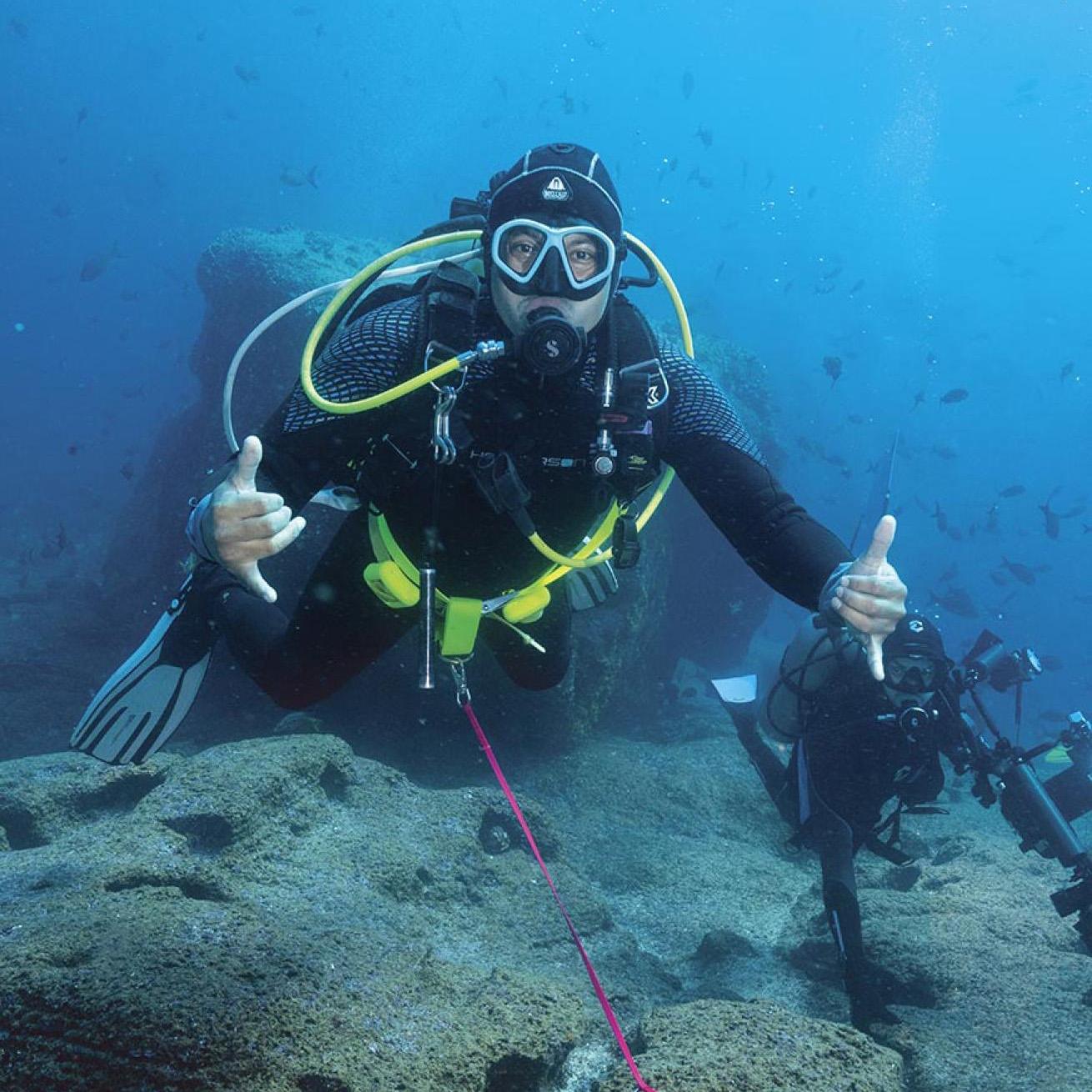
Candice LandauA reef hook makes Galapagos diving much more relaxing, especially for photographers.
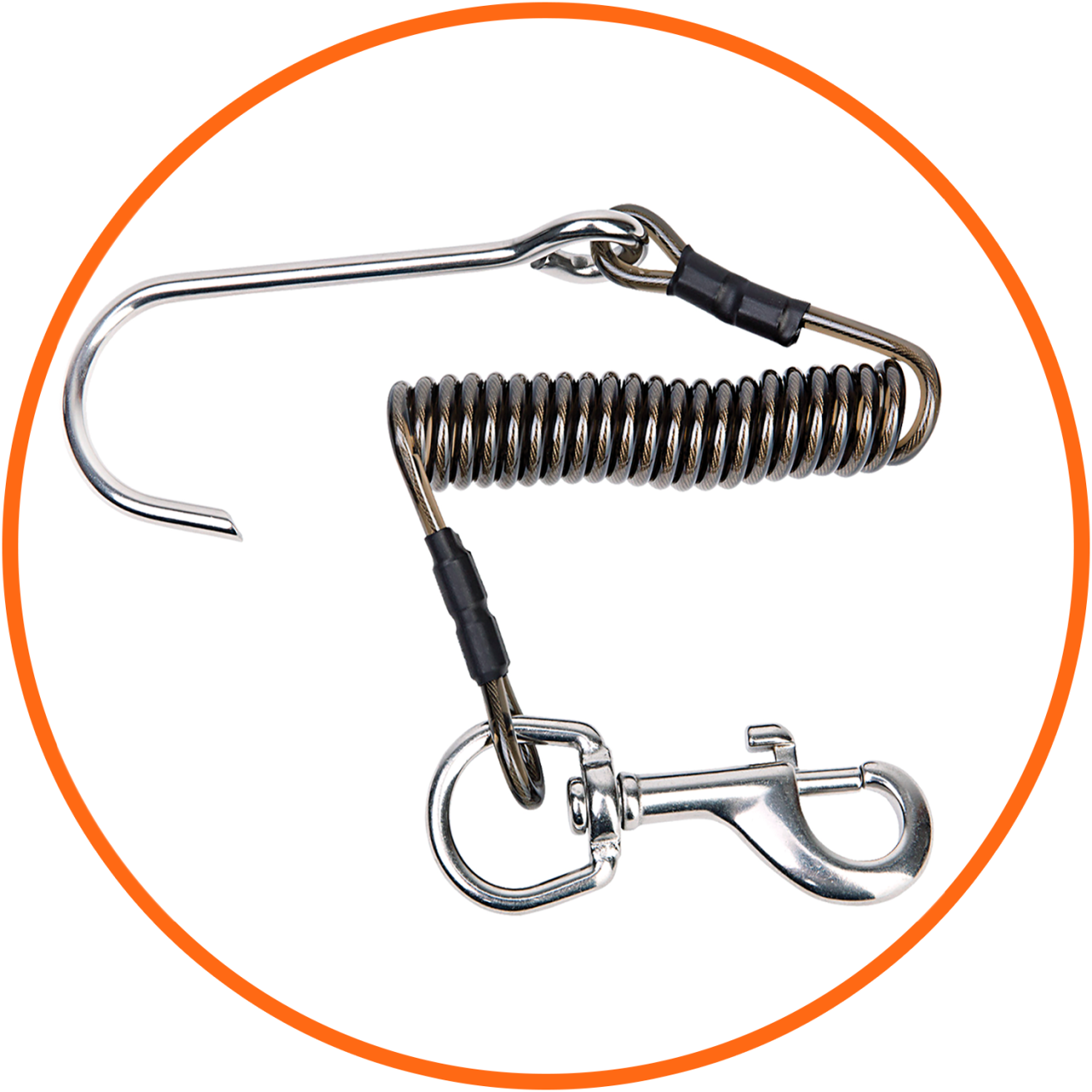
TIP 01
Prepare for Strong Currents
If there’s one thing that defines diving in Galapagos, it’s the strong currents. You’ll enjoy your time more if you know how to handle them. Make sure you have your PADI Advanced Open Water certification before booking a trip, and ideally, some solid diving experience. In fact, if you have time, consider additional training, such as the PADI Drift Diver course, or get experience diving in currents.
Fellow passenger and marine biologist-filmmaker Noemi Merz was surprised by the intensity of the currents. “Sometimes I was hanging on a rock with one hand and trying to balance my underwater housing with the other hand. I felt that just being very confident with your buoyancy would be a big plus.”
Personally, I was glad I’d packed my own reef hook. It was small enough to stow in my wetsuit pocket and made hanging on a current-swept wall while watching hammerhead sharks pass by a relaxing experience. Without it, I’d have quickly burned through my air.
Shark biologist Andy Fragola advises divers to get comfortable deploying a surface marker buoy as at sites near Darwin and Wolf, it’s easier to get separated from the group.

TIP 02
Get Comfortable with Your Gear
During the cool season—June to November—the water temperature in Galapagos ranges from 60 to 77 degrees. It’s cold enough to require a 5 mm or 7 mm wetsuit, boots, hood and gloves. You might even want a drysuit, but be sure you’re comfortable using it if you choose that option. Underwater photographer Daniel Nicholson suggests bringing any warm items you have, such as a boat coat, or something extra to wear under your wetsuit.
Dive travel agent Risueno also recommends packing your own dive gear. “If that’s not possible, bring the essentials: your own good mask, regulator and dive computer.” While liveaboards often rent gear—and Galaxy Diver II is no exception—it’s easier when you already know how your equipment functions. If you haven’t dived with 5 mm gloves or a hood before, try them out before booking your trip. And, make sure you’re comfortable in a 7mm wetsuit, as they can feel cumbersome even to experienced divers.
Know how to deploy your surface marker buoy from depth and how to use a reef hook, along with any other equipment you plan to bring, such as a camera.
Related Reading: A Land-and-Sea Tour of Hawaii's Big Island
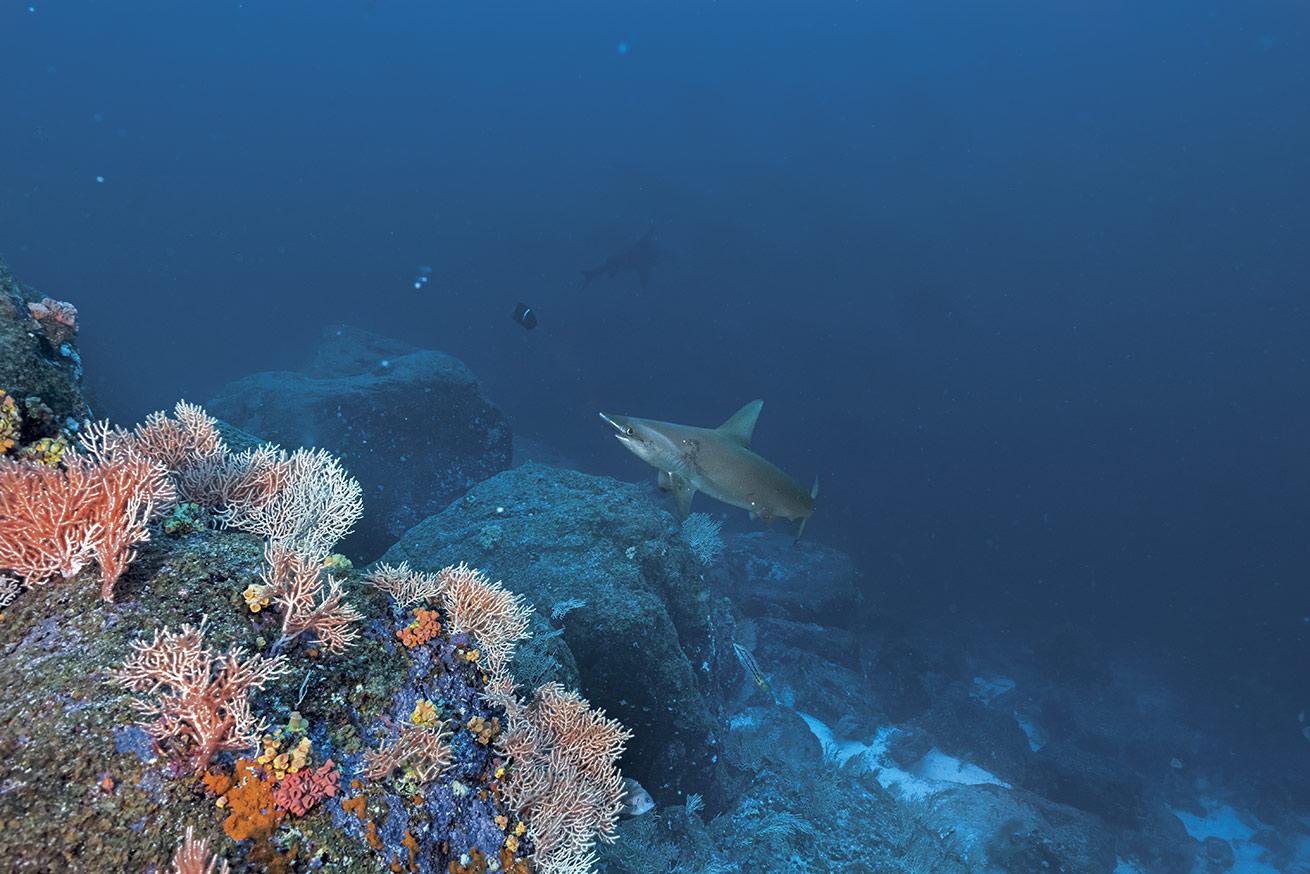
Candice LandauA hammerhead shark swims past a rocky reef.

TIP 03
Dial in Your Camera Beforehand
With a dozen underwater photographers and videographers on the inaugural Galaxy Diver II expedition, there was plenty of advice on preparing to shoot in the unique Galapagos environment.
Both Nicholson and Merz recommend using strobes or video lights due to the lowlight conditions. “You might not use it for the really big stuff, but for everything else, you’ll want some light to bring color to your photos,” says Nicholson. He also suggests attaching your camera to your BCD so you can let go and grab onto rocks if the current picks up.
Merz, who’s seen many whale sharks before, notes that the ones in Galapagos are much larger than usual: “We’re not talking about a 5-meter whale shark, we’re talking about a 12-meter whale shark, which makes trying to photograph them a very different experience.” With strong currents and the need to swim to get anywhere near a whale shark, having your camera settings dialed in is essential—there’s no time to fiddle.
If you’re after the money shots, go wide. Nicholson calls it the land of the big stuff: “You’re not going to spend too much time looking for macro things when a school of hammerheads is above you. Use the widest lens, the most powerful strobes, and be comfortable holding on with one hand and using your camera with the other.”
Emmy award-winning cinematographer Maxwel Hohn also advises dialing in your settings before hitting the water. “Many people miss opportunities because they don’t prep their gear and learn the basics.” Even for experienced divers, this is a destination to refresh skills for.
Being adaptable is also key. Sometimes subjects are far away; other times, they’re within arm’s reach and massive. As Claudio Brandileone, PADI’s regional manager of Central America, wisely puts it, “Whale sharks do not stop for the picture.”
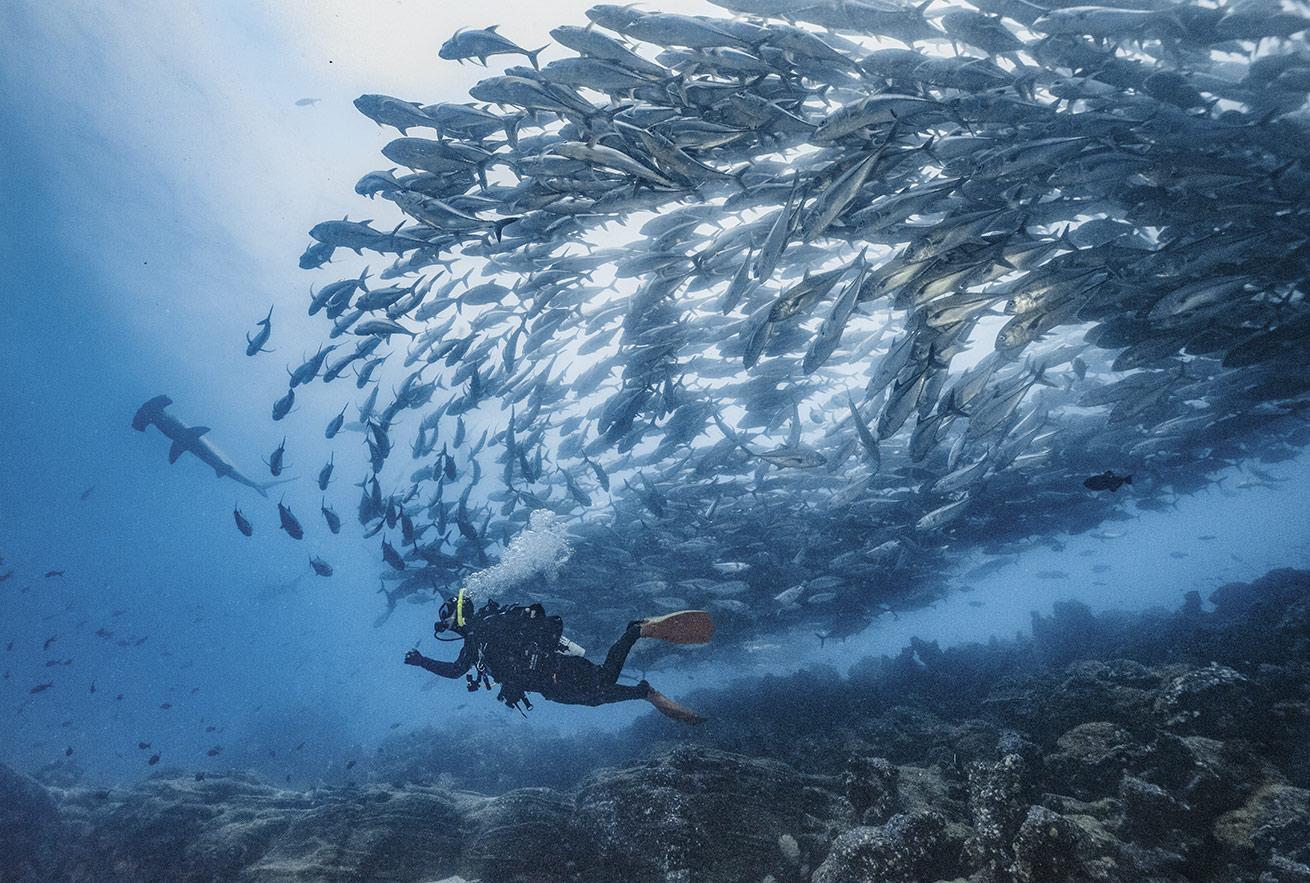
Timo DerschNutrient-rich waters bring a bounty of life to Galapagos, making every dive unforgettable.
TIP 04
Consider the Time of Year
No two seasons in the Galapagos Islands are the same. One of the most common questions Risueno gets is about the weather and water temperature. He recommends reaching out to the organization you’re traveling with to get specific details on water conditions, sea temperature, and marine life for the months you’re considering. “Galapagos has some of the most unique marine life on the planet. Don’t skimp on your research.”
While many species, such as marine iguanas, sea lions and turtles, can be seen year-round, the best time for hammerhead sharks, whale sharks and humpback whales is from June to November, when colder, nutrient-rich waters bring in more life. For manta rays and milder water temperatures, visit from December to May.
Risueno warns against assuming diving conditions are the same year-round or that you can book your trip at any time. “Only about 150 divers per week can take this incredible loop. The national park regulates liveaboard groups, and diving with another group is not allowed at the same time, which is why every boat departs on a different day of the week.”
In short, be sure to consult with your dive operator before you go to ensure you get the best experience based on what you’re hoping to see.
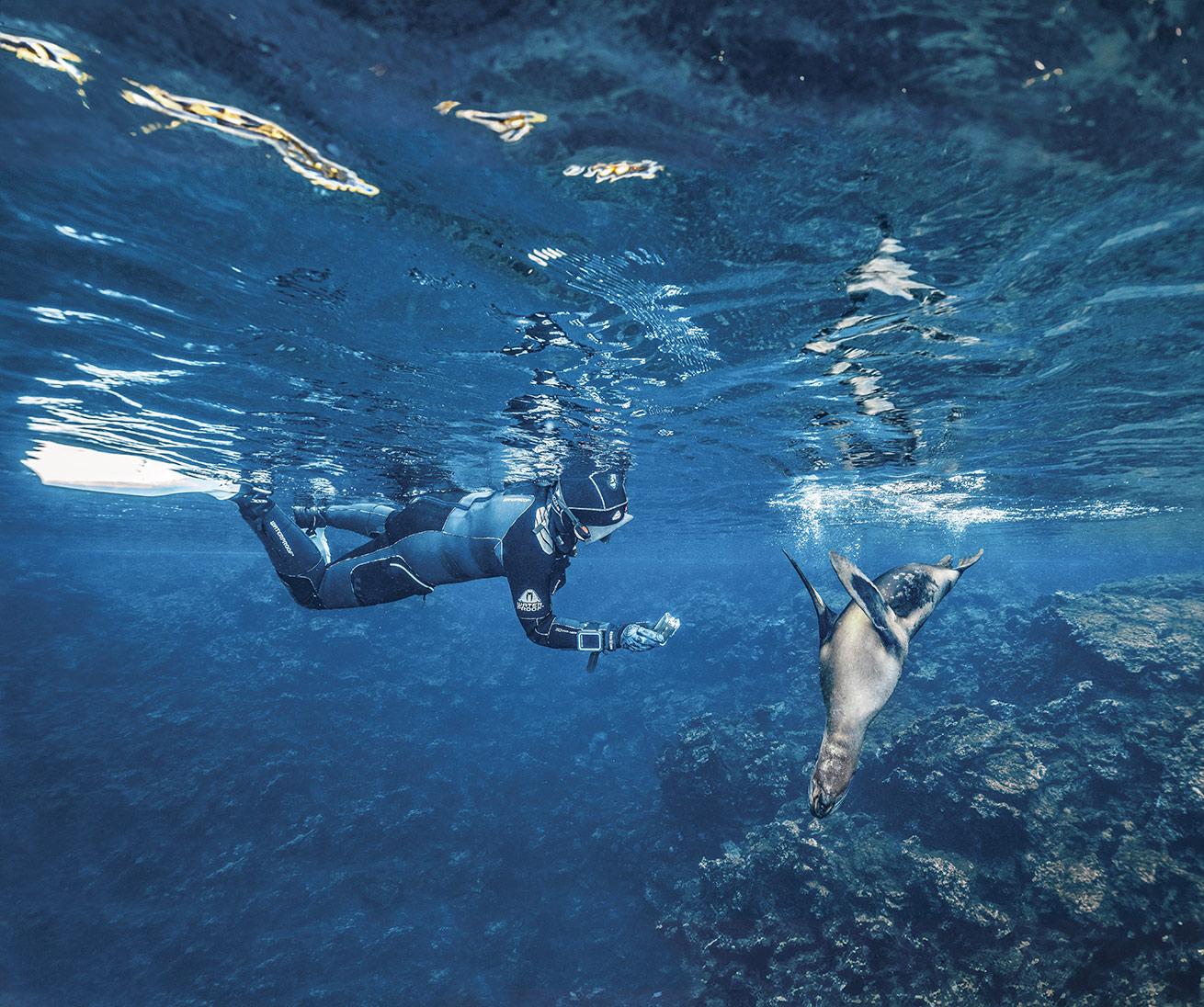
Timo DerschEven outside of diving, opportunities to interact with local marine life abound.

TIP 05
Pack Wisely for the Trip
In addition to your reef hook and surface marker buoy, there are a few other items you’ll find incredibly useful.
Journalist and underwater photographer Timo Dersch recommends bringing a soft freediving snorkel you can easily stash in a pocket. “After one dive, we spontaneously swam into a small bay to see if there were any sea lions. And sure enough, there they were. Without the snorkel, photographing them while holding my breath would’ve been even harder.”
Another gear item to consider is a set of freediving fins. These long-bladed fins help you keep pace with large, fast-moving marine life like whale sharks and make navigating strong currents easier. “I chose plastic freediving fins for their ruggedness. Even though other materials offer better propulsion.” Dersch also advises wearing neoprene socks with closed-foot freediving fins in cold water.
Alex Garrido and Mike Bárcena, co-founders of Alpha Expeditions, recommend thinking beyond the diving. “Pack eco-friendly sunscreen, a reusable water bottle and a dry bag for boat trips. Layers are also important due to land excursions that can range from sunny beaches to chilly highlands.”
Lastly, a GPS rescue system. While Galaxy Diver II provided one for each passenger, I brought my own Nautilus LifeLine, which I was already familiar with. I strongly recommend buying your own and attaching a bolt snap to it so it’s easily accessible. In a worst-case scenario, if you’re separated from the boat due to strong currents, you can activate the transmitter to alert nearby boats of your location and need for help.
Related Reading: 4 Conservation Artists You Should Follow
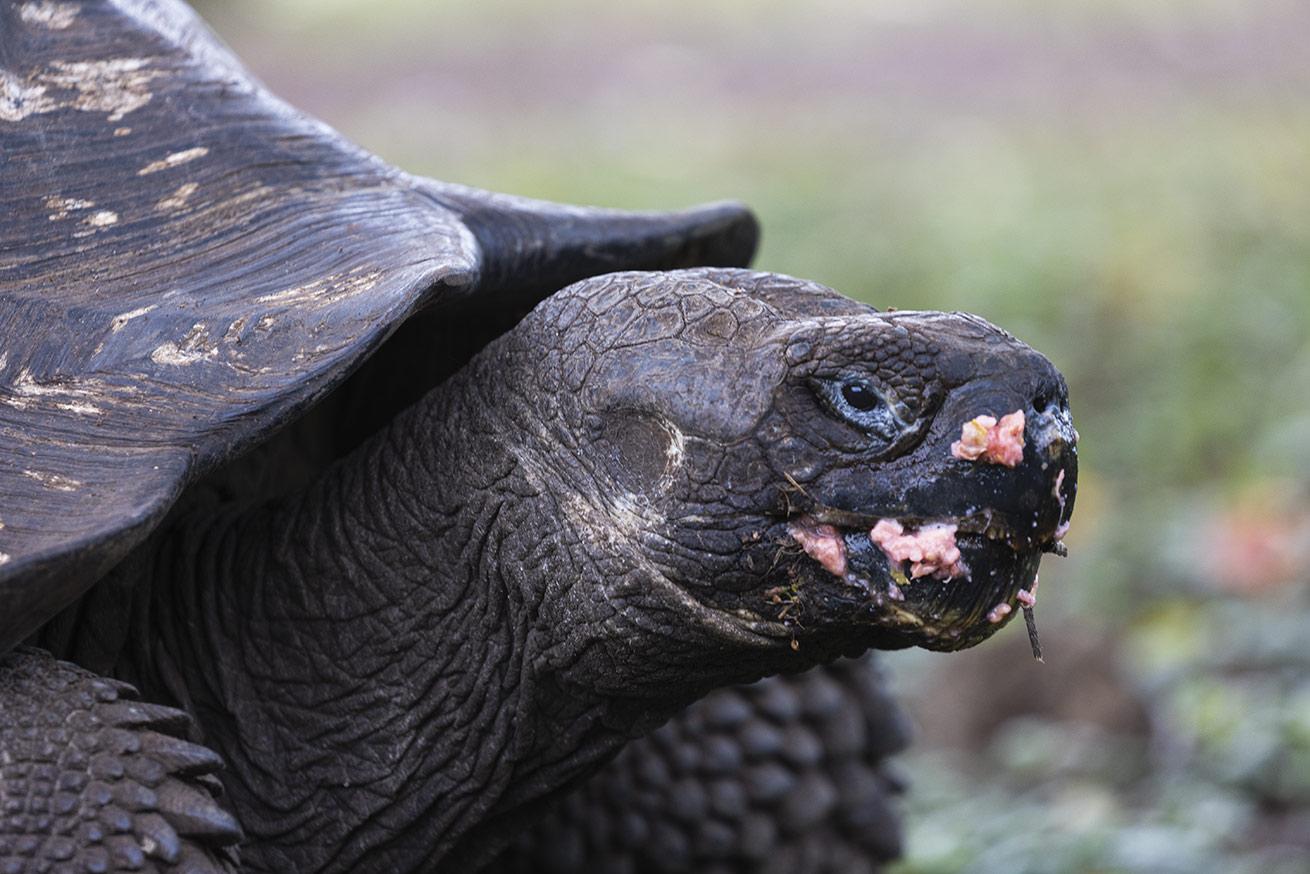
Candice LandauGuava is a favorite snack of giant tortoises.
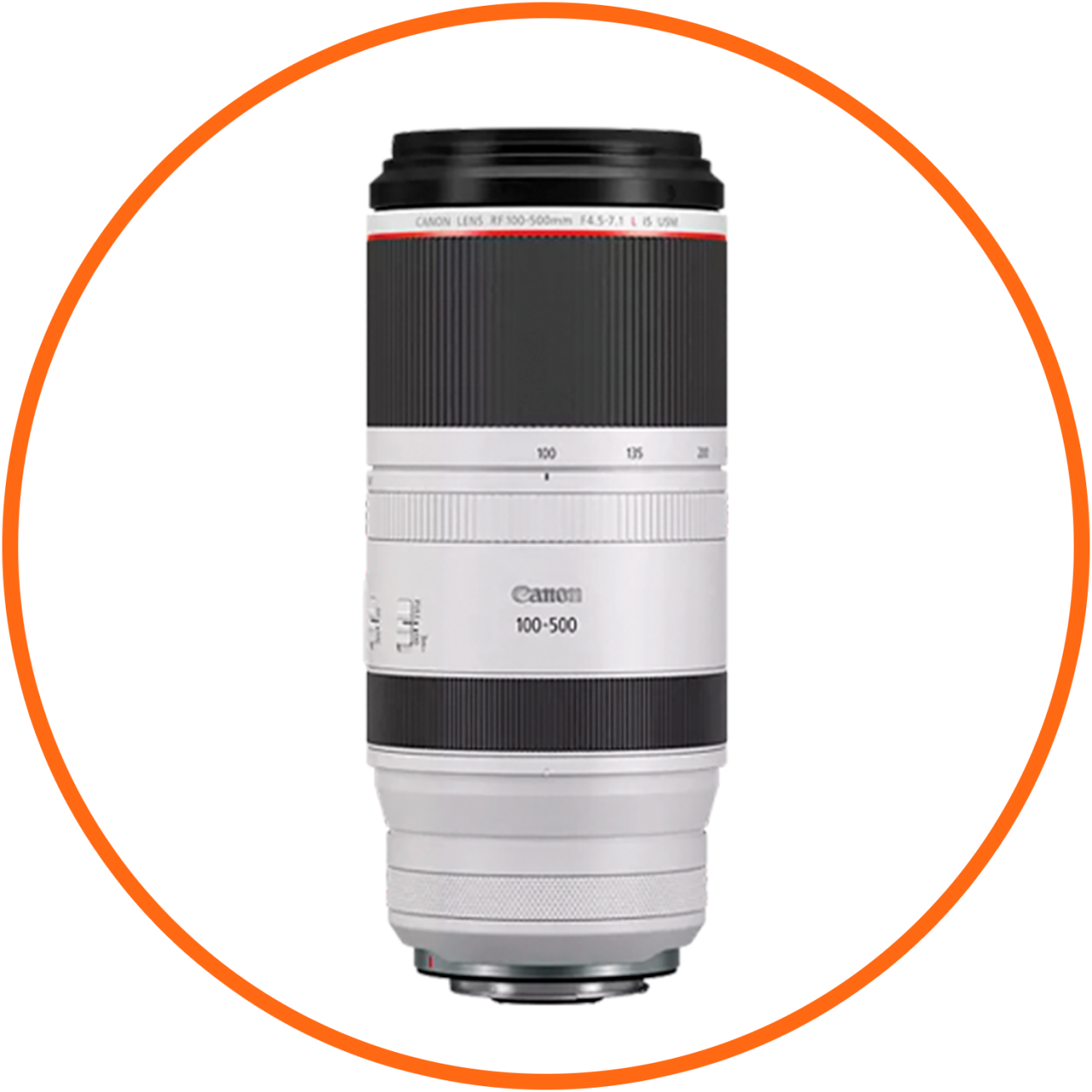
TIP 06
Land Excursions Are Essential
If there’s one thing I wish I’d had more time for in Galapagos, it’s topside touring. Cinematographer Hohn recommends spending as much time on land as in the water. “It’s an amazing diving destination, but it’s also an incredible island. Seeing the wildlife up close is really special. We spent a couple of weeks doing land tours and snorkeling, then spent the rest of the time on the liveaboard. We got to experience the best of both worlds.”
If you’re short on time, Julio Salvatori, PADI’s regional manager of South America and Panama, suggests adding at least two extra days for land excursions on Santa Cruz Island. Visit the Charles Darwin Station and the Giant Tortoise Reserve, explore the beaches and immerse yourself in the local culture in Puerto Ayora.
If you enjoy hiking, Brandileone suggests visiting Isabella Island.
I’d also recommend a layover in Quito, Ecuador. It’s a beautiful city with a rich and diverse cultural heritage shaped by centuries of history, Indigenous traditions and Spanish colonial influence. Be sure to walk the historic city center and to visit the magnificent Church of La Compañía, famous for its stunning ornate interior featuring intricate gold leaf detailing that covers nearly every surface, including altars, columns and ceilings.
On a clear day in Quito, don’t forget to look into the distance for a glimpse of the famous Virgin of El Panecillo—one of the highest statues in South America—as well as a number of volcanoes.
Though you’ll be diving much of the time, your liveaboard crew may offer the occasional panga or Zodiac ride. In these cases, you’ll want to bring topside camera gear. A good telephoto lens is a must. If you don’t have one, rent it. I used Lensrentals.com and was grateful for it—without it, good shots of the marine iguanas would have been much harder to capture.
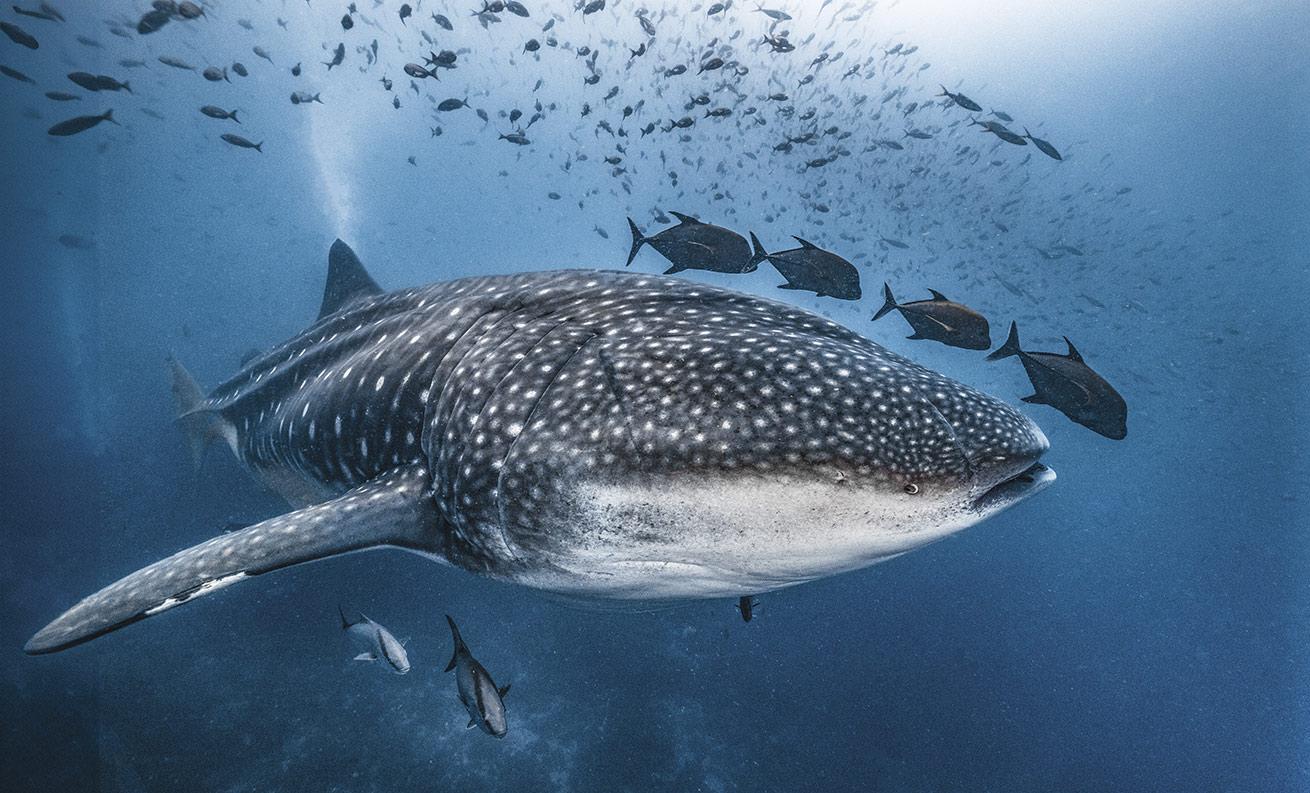
Timo DerschWhale sharks aren’t as slow as they seem; keeping up with them requires a level of fitness.
TIP 07
Get in Shape
The first time I saw a whale shark in Galapagos, I nearly passed out—not from excitement but from the intense swimming I did trying to get close enough to photograph it in the current. That moment made me realize I not only needed freediving fins but also needed to get back to lap swimming—or perhaps just enjoy the view from a little farther away.
Brandileone confirms being in good shape is essential for enjoying Galapagos diving. “Three or four current-heavy dives a day can drain a lot of energy,” he says. “Train a little before you go.”
If you own short fins designed for frog kick and technical diving, you might want to consider something different for the islands—longer fins that provide better propulsion and allow for a flutter kick. The reefs here are rocky, so there’s less likelihood of damaging sensitive corals.
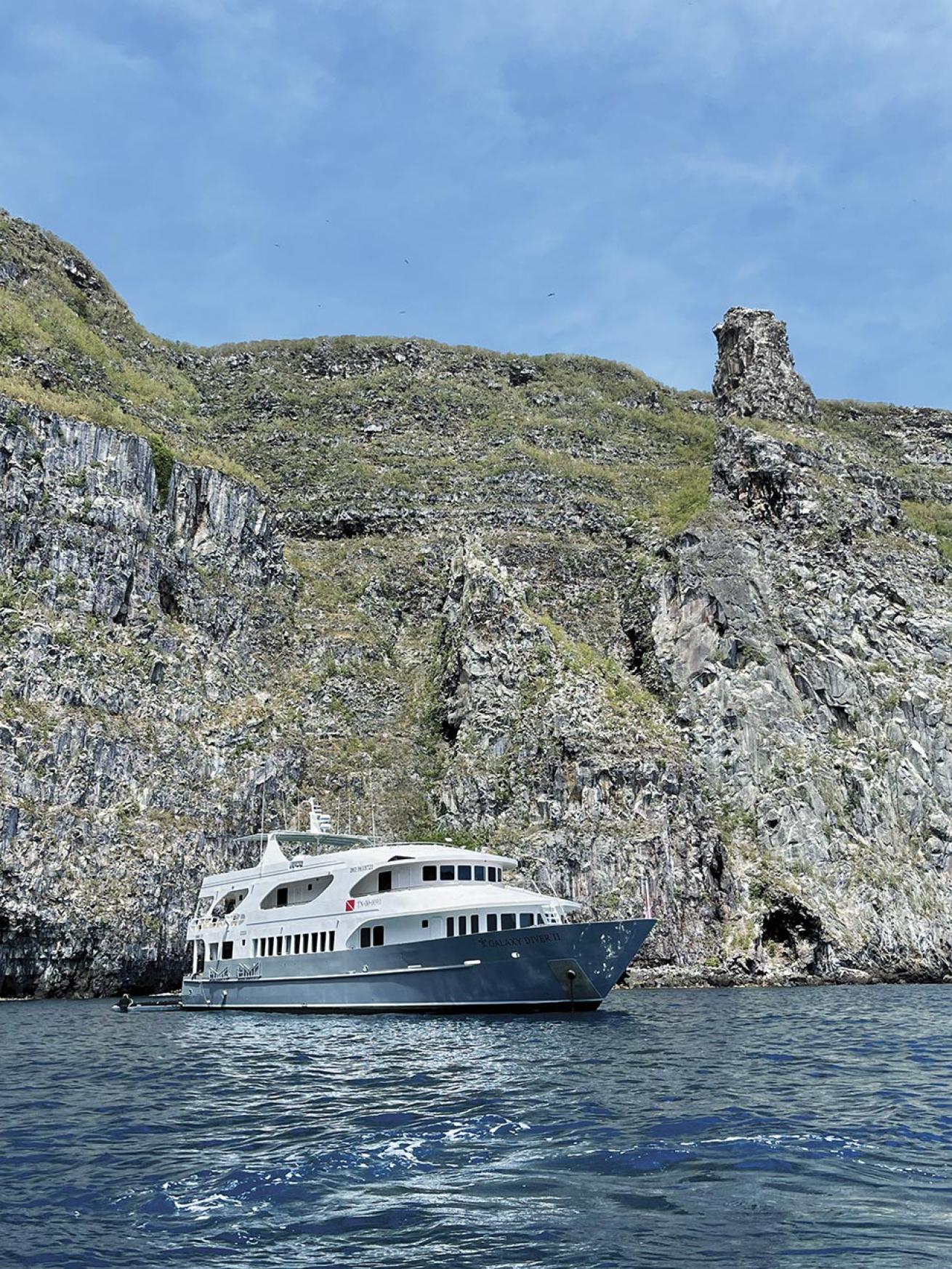
Candice LandauHundreds of birds nest on cliffs behind Galaxy Diver II.
NEED TO KNOW
Operator
This trip was conducted through Galagents and took place on Galaxy Diver II, a luxury liveaboard staffed by locals with a lot of experience in the region.
Water Temperatures
Water is warmest and clearest from December through May (65°–80°). Water is coolest from June to November (60°–77°).
What to Wear
A 5 mm or 7 mm wetsuit is recommended. In the colder months, a drysuit might be most comfortable. Hood and gloves are a must.
When to Visit
The best time to visit depends on what you want to see. Peak season is from June to October and offers the greatest chance to see whale sharks and schooling hammerheads.

